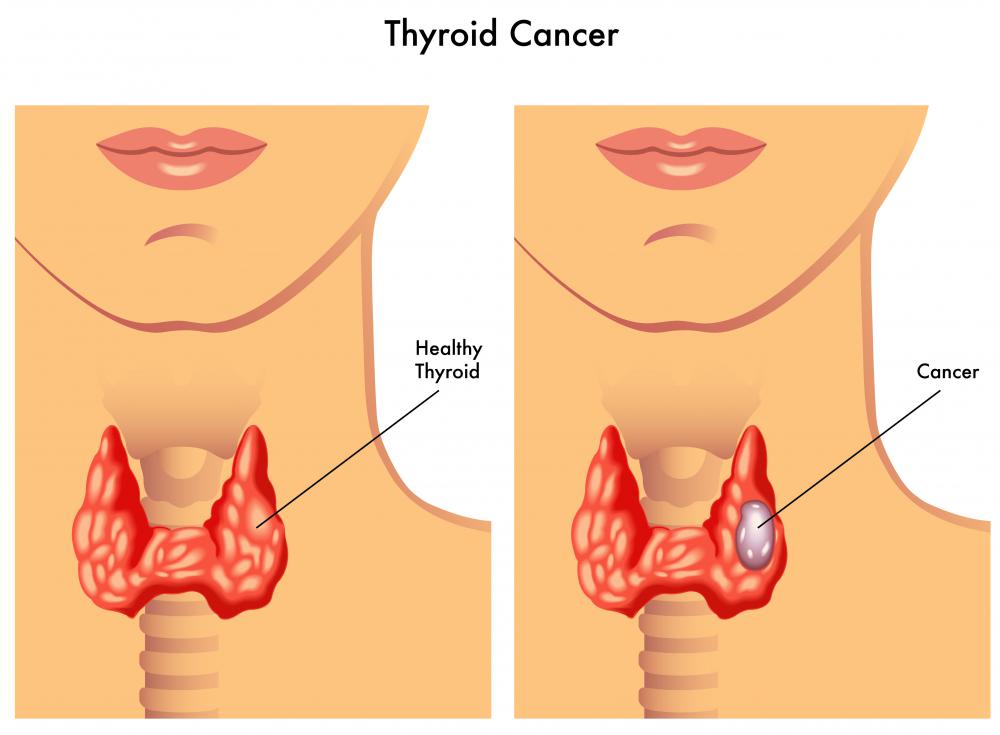At WiseGEEK, we're committed to delivering accurate, trustworthy information. Our expert-authored content is rigorously fact-checked and sourced from credible authorities. Discover how we uphold the highest standards in providing you with reliable knowledge.
What is Doxorubicin?
Doxorubicin is a chemotherapy agent used in the treatment of several types of cancer. In addition, this medication is an antibiotic, which means that it is produced by bacteria and is capable of killing bacterial species. Doxorubicin also is called hydroxydaunorubicin and is sold under brand names such as Adriamycin® and Rubex®.
The way in which this drug works as an anti-cancer agent is not well understood. It is thought that the drug might be involved in a process called deoxyribonucleic acid (DNA) intercalation. In intercalation, non-DNA molecules become inserted into the DNA matrix, causing DNA malformation and, eventually, cell death. As with other chemotherapy agents, this drug can affect all cell types. It is, however, significantly more potent in rapidly dividing cells, because these take up larger amounts of the drug.

The primary use of doxorubicin is in chemotherapy treatment for several cancers. This drug most often is used to treat Hodgkin’s lymphoma, leukemia, multiple myeloma, soft tissue sarcoma and cancers of the thyroid, breast, lung, stomach, ovary and bladder. The drug generally is used in combination with at least one other chemotherapy agent, because most types of chemotherapy regimens are more effective when two or more chemotherapy drugs are used together.

Unlike many other antibiotic drugs, the origins of this antibiotic were not in a laboratory. Instead, the precursor to this cancer drug was discovered in the 1950s in soil samples taken from the grounds of a 13th century castle located in Andria, Italy. The soil samples were found to contain a previously unknown strain of a bacterial species called Streptomyces peucetius. The bacteria produced an antibiotic that has significant anti-cancer activity. This antibiotic was named daunorubicin.

It subsequently was discovered that daunorubicin could, in rare cases, cause fatal cardiac problems. To solve this issue, researchers mutated the Streptomyces peucetius species so that it produced a slightly modified form of daunorubicin, which was named doxorubicin. This antibiotic is a more potent anti-cancer agent than daunorubicin, but it does retain some cardiac toxicity.

The most common side effects of this cancer treatment are similar to those caused by other intravenous chemotherapy agents. These include nausea, vomiting, hair loss and reduced immune system function leading to vulnerability to infection. Another possible side effect is the development of hand-foot syndrome, in which lesions develop on the hands and feet, causing numbness, swelling and pain.

Although doxorubicin is less toxic than daunorubicin, there still is a significant risk of cardiac problems after a certain cumulative dose has been reached. Possible cardiac issues include heart damage and congestive heart failure, either of which can cause death. Heart problems are a risk because the chemotherapy drug can react with iron, and the resulting reactive oxygen molecules can damage heart cells.
AS FEATURED ON:
AS FEATURED ON:















Discuss this Article
Post your comments